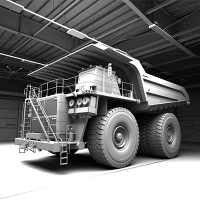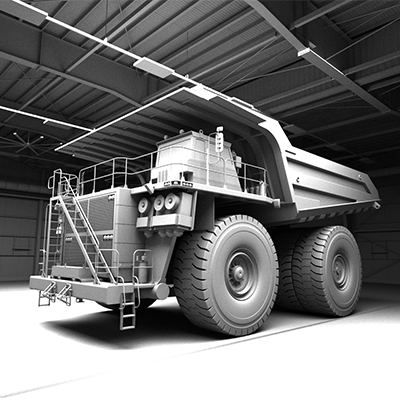5 important lessons to take advantage of for VR success

For today’s mines, collecting and analysing data—from exploration through reclamation—is crucial to the success of the operation. However, collecting this data entails exposure to certain safety risks.
To minimise these risks, in-depth safety training is required before engineers can step foot in a pit or underground mine. With this training, mining personnel can learn to spot potential hazards and act quickly in emergency situations.
And with the help of VR, safety training has the potential to improve. Drastically.
We recently set out to develop a VR application in collaboration with ReconXR, a virtual, augmented, and mixed reality solution provider, to meet the highwall safety training needs of a geotechnical engineering group at a major North American mine site. The goal of the VR application is to immerse trainees in a simulated environment that replicates the mine and all of its geological features as realistically as possible. This will enable the geotechnical engineers to assess, measure and analyse structures specific to their site in a way that would normally be impossible due to the safety risks.
Inside the app’s VR environment, the user can see and learn more than in the real-world environment as proximity limits to hazardous areas simply do not exist. For example, imagine the possibilities if your geologists and geotechnical engineers were able to hover 152 meters above the ground; nose-to-nose with geologic structures, hazards, and other areas in need of closer investigation.
In an effort to increase future collaboration, we are sharing some of the lessons learned over the course of this project so that others can benefit from our findings as well.
5 key lessons learned during our virtual reality project
1. The technology is there
The hardware and software needed to implement valuable VR mining environments are already available. And as consumer and industrial applications drive increased usage, the costs that come with integrating this technology into meaningful mining workflows are decreasing.
2. Implementing VR at mine sites exposes data quality issues
The collection and processing of high-resolution visual data are vital to the constructive use of VR technology by mining personnel looking to migrate current physical activities to safer, more engaging virtual ones.
The data that drives VR simulations are derived from laser scanning and/or photogrammetry, then processed by software to create visually engaging VR environments. To produce these types of interactive environments, all visual data collected needs to be full colour, accurate and properly registered.
Lower quality data can present itself in many ways in the simulated environment, including black holes or degraded image quality—making it immediately evident to the VR user.
Data that was previously considered to be acceptable may actually reveal itself to be lacking when scrutinised with the visual clarity of a VR experience. Fortunately, the industry is trending toward higher resolution data collection and clients quickly understand that refining their data collection processes improves both their innovative projects as well as their day-to-day business practices.
3. Visualisation technology is advancing rapidly
Hardware, like headsets and hand controllers, are at the core of producing VR environments and are rapidly becoming more accessible and portable.
Ever-increasing portability means that visualisations can be shared quickly across a site without the need for expensive and complicated hardware or expertise. VR hardware is continuously improving and will soon match the capabilities of VR software, making future applications faster to deploy and far-reaching in scope and value.
4. Commitment is critical
VR simulations that contribute effectively to mining and production driven workflows require inter-departmental cooperation and a shared commitment to the value of the completed solution.
For example, this specific project group was comprised of geologists, geotechnical engineers, drone and scanning teams, survey, global leadership, and the local mine management team. The diversity of this group necessitated clear goals from the beginning. Once these goals were set, the collective team was able to focus on the project’s intended result despite the emergence of any unexpected challenges typical of such pioneering projects—that’s innovation!
To encourage cooperation, participation, and enthusiasm around the project in the face of such challenges, it was vital for the business value of the VR training application to be clearly communicated across the team and larger organization as a whole.
5. Keep it simple
With many stakeholders across a site or organization, it’s easy for the scope of an innovative project to quickly get out of hand.
Unforeseen challenges can crop up at any time during the span of the project. At the same time, new applications for the technology might be discovered mid-project and added to the list of objectives. And while it is great to make these discoveries, it is more important to focus on the deliverable than it is to try and squeeze functionality into a project that has already been approved and budgeted.
In the case of this VR geotechnical training application, the primary objective was to produce an MVP (or minimally viable product). And although a shifting scope for this project was to be expected, clear and ongoing communication with all stakeholders helped to manage any additional goals and timelines. This communication kept the scope of the project under control, therefore avoiding any added constraints which could have delayed the project.
Innovation isn’t always easy, but it is rewarding.
It can be difficult to convince leaders and team members of the value in something new and experimental, so an agile approach focused on iterative design and deliverables is key to maintaining the excitement and commitment of the working team and leadership.
Clear communication throughout the life of the project is also vital when faced with challenges. It’s necessary to revisit main objectives during times when the goals get muddled, otherwise, it can be difficult to keep things on schedule and within a reasonable scope.
Projects like this geotechnical highwall safety training VR application can be both exciting and rewarding, especially for the involved teams and stakeholders who are able to move the innovation needle forward for their entire organization. This particular VR simulation reduces safety risks for miners—a huge benefit in the risk-averse mining industry. And although VR is still fairly new, leaders in the mining industry are increasingly understanding the value of this visualisation technology, making this an exciting time to turn your innovation into reality…or virtual reality.



